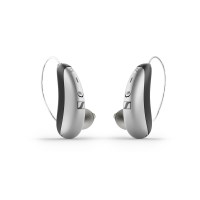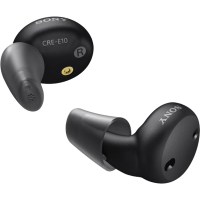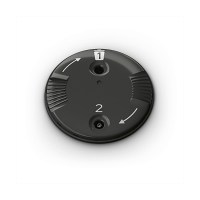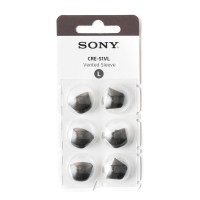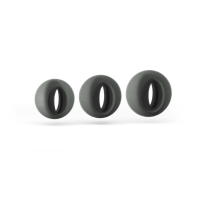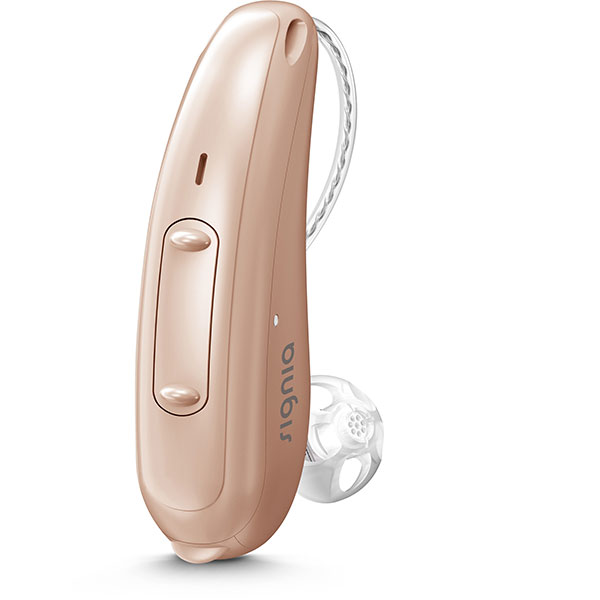Within the two basic styles are variations of sizes and features. But this is a general overview of the two basic styles of hearing aids, in the ear hearing aids and behind the ear hearing aids.
The receiver in the ear behind the ear hearing aid is the most common hearing aid on the market. There are numerous reasons for its popularity. The first is that its ability to be fit without any custom earpieces makes it an extremely popular choice for the person fitting the hearing aids. Without having to customize any part of the hearing aid, a person can be fit with hearing aids more quickly and efficiently. Another reason for its popularity is the lightweight, comfortable feel in the ear. People report that they barely can tell it’s in their ears, and in fact, some have even reported forgetting that they were in there and wearing them into the shower. (Whoops.) It’s a good thing that the earpieces on this type of hearing aid are interchangeable and can be replaced in-house without having to be sent to the manufacturer for repair. That’s another reason for its popularity. Less potential for it needing to be sent to the manufacturer for repair means more time for the hearing aids to be worn in the patient’s ears.
The second type of hearing aid style, the in-the-ear hearing aid, has some advantages as well. The first is that it is only one piece, so it can be easier to get used to putting in your ear. It having one piece can also be helpful by not having any part outside of your ear. Not only is this popular because many people don’t want their hearing aids to show, but ever since people have been wearing masks due to the Covid pandemic, this has been the number one reason why patients have expressed to me that they want to get in-the-ear hearing aids so that the hearing aids don’t get tangled in the mask and get lost by being pulled out of the ear from the mask straps. Now that’s a very practical reason.
In the ear hearing aids come in different sizes. See the chart below detailing the different sizes for in-the-ear hearing aids. Most need to be custom fit for your ears for an optimal fit. Here at Hearing Aids and More, we sell one type of in-ear-ear hearing aid, the non-custom in the canal hearing aids. Custom-fit hearing aids that use an earmold molded to your ear shape to be made require in-person visits to ensure an optimal fit.
If you want to get an in-the-ear hearing aid, we work with a non-custom in-the-ear hearing aid that is compact yet effective. These hearing aids, due to their size, require batteries and are not rechargeable. For many, it’s a worthy trade-off to have small, nearly un-detectible hearing aids. But, you may be thinking, are you a candidate for an in-the-ear hearing aid?
Which hearing aid style is right for you is often determined by the configuration of your hearing loss. If you have a sloping hearing loss, with nearly normal hearing in the lower frequencies, then oftentimes, an open fit receiver in the ear (a type of behind the ear hearing aid style) is recommended for your hearing loss. The reason is that having an almost normal hearing in the low frequencies means that if you were to plug your ears with an in-the-ear style hearing aid, then you would hear your own voice very loud. It may even sound like it’s in a barrel. To try this at home, plug up your ears by holding your fingers over your ears to close the ear canal fully. Now talk with your ear canals plugged up. This sensation from putting in-the-ear hearing aids is called the occlusion effect.
According to Safepedia.com, the occlusion effect occurs when a person hears a booming or hollowed echo-like sound. These sounds usually escape through an open ear canal; when that canal is blocked, these sounds rebound, maximizing even low-frequency sounds…The occlusion effect can boost low-frequency sound pressure in the ear canal by 20 decibels (dB) or more.
Which hearing aid is right for you?
As a general rule, in-the-ear hearing aid styles are appropriate for a mild or greater hearing loss. The main reason is to avoid the occlusion effect, which can result in rejecting hearing aids altogether because it can be frustrating to adapt to the occlusion sensation.
If you have close to normal low-frequency hearing levels, then a receiver in the ear behind the ear hearing aid style will likely be right for you.
Book an appointment today for a consultation on which hearing aid may be right for you.
Below are two audiograms. Can you match the audiogram to the recommended style of hearing aid?


Resource credit:
https://www.safeopedia.com/definition/7626/occlusion-effect
Answer Key:
Figure one shows a mild to moderately severe high-frequency hearing loss with normal low-frequency hearing levels. The recommended hearing aid style is open-fit hearing aids so as not to plug up the ears and cause occlusion that may lead to rejecting the hearing aids.
Figure two shows a moderate to moderately severe hearing loss, for which in-the-ear hearing aids would be effective.


